|
|
Advertisement:
|
|
Six Smaller P4 Coolers |
|
Join the community - in the OCAU Forums!
|
Introduction, Titan Siberia, Vantec AeroFlow
Today we have the second part of our P4 cooler roundup. The earlier chapter dealt with five large coolers, while today's offerings are less imposing. I realise we're doing this roundup fairly late in the S478 P4's life, but there's a huge installed base of these CPUs in the market, most with the stock cooler. Until LGA775 demonstrates a marked performance increase, many people are content to stay with their existing system. Rest assured there are some better cooling options available without spending a fortune. Many of these can be used with your future CPU as well.
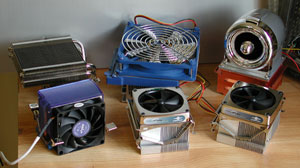
Clockwise from top left we have Thermalright's XP-90, Titan's Siberia, Cooler Master's Jet 4, two versions of Vantec's AeroFlow and Spire's SP450B0 CoolGate. All mount using the standard retention module on S478 motherboards and only two feature heat-pipes. You may be thinking that the Jet 4 and Cyberia both count as "large" coolers, so should have been in the earlier roundup, but both of those are only large due to their fans. The actual heatsink portion of the cooler is of similar size to the others in this roundup. The XP-90 has the largest heatsink here, but given we looked at its bigger brother (XP-120) in the earlier roundup, it makes sense to cover the smaller one here.
So, let's look at them in detail:
Titan Siberia:
This unusual-looking cooler combines some conventional cooler features. The heatsink itself is a fairly unexciting milled aluminium design, although there is a copper slug in the base where the CPU core contacts it. The heatsink looks as though it's designed for an 80mm fan, but the retail pack includes a 120mm unit with a special mounting bracket.
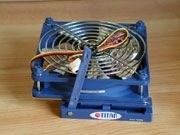 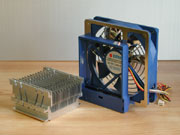 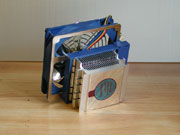
The 120mm fan mounts directly to the top of the heatsink, with the extra blade area blowing down onto the motherboard. As the package advises: Not just cooling CPU but also cooling motherboard. There's some flexibility in how you orient the fan, so you can direct the extra airflow at your motherboard's power circuitry, or perhaps the northbridge and back of video card area. The fan body does slightly overhang the top of the motherboard when oriented upwards on our IC7 testbed.
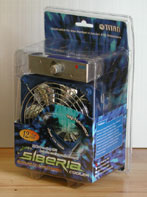 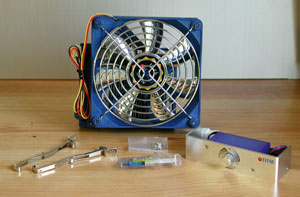
The destroy-while-opening retail pack also includes mounting clips, some "Titan Nano Blue" thermal paste and a fan-speed controller with mounting screws. This controller sits in a 3.5" bay and features a rheostat dial for very fine fan-speed control.
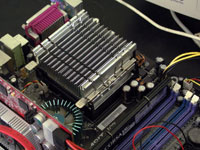 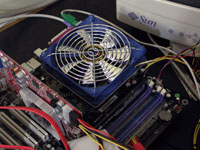
At full speed the chrome-effect 120mm fan is quite loud, while at the lowest setting it is virtually silent - I couldn't hear it over the stock video card fan in the testbed. Installation is a little fiddly but not too bad and seems very secure once mounted. The heatsink body entirely fills the space outlined by the stock retention module, but does not protrude beyond it, so there should be no compatability issues on any motherboards. The version we received is only compatible with S478, but according to the side of the box there are versions available for LGA775, S462 (and presumably S370) and S939/940/754. Removal was quite fiddly, requiring the use of a flat-head screwdriver to lever the clips away from the RM.
Vantec AeroFlow:
We received two versions of this cooler from Vantec, the only difference between them being the speed of the included fan. The fans themselves are Y.S.Tech's "TMD Fan", which you might recall we had the scoop on a few years ago. The "Tip-Magnetic Driven" fans have no central motor - the electrics which rotate the fan blade assembly are around the edge of the fan body, instead of the centre. The major advantage is a big reduction in the "dead spot" of stagnant air normally found under the centre of a fan. I've seen them used on a few coolers over the years but this is the first time I've actually tested them.
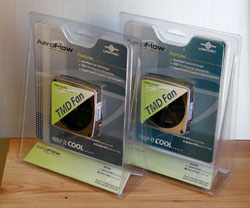
The resealable retail packs are very simple, including the heatsink with fan attached, a small installation guide and a tube of Vantec thermal paste. The heatsink body is unusual, in that the fins do not run straight from one side to the other. You can see in the photos that each fin is only half the width of the heatsink body.
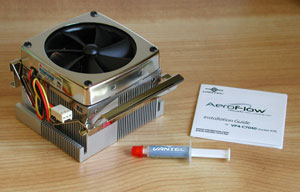 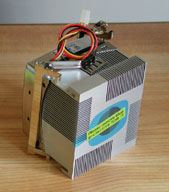
To quote their website: The AeroFlow is also designed with unique, four-sided aluminum fins that slope inside the heatsink, smoothly removing the heat from the center of the heatsink and allowing air to flow through all four sides. The CPU contacts this heatsink via a central copper core. This model is only for S478 CPUs, but there is a version that fits SocketA/370/7.
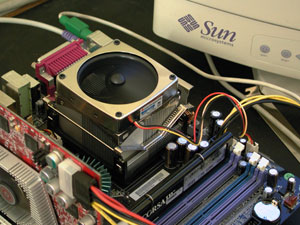
Installation is simple enough, but a lot of force is required to latch the arms to the motherboard retention module. Removal is simple. On the noise front, both fans emit a noticeable "turbine" whine when powering up. This actually sounds fairly cool when turning your PC on, but can still be faintly heard during continued use. If anything, the faster fan drowns out the high-pitched whine with lower-pitched wind noise. Neither are silent, but they're not particularly loud either.
|
|
Advertisement:
All original content copyright James Rolfe.
All rights reserved. No reproduction allowed without written permission.
Interested in advertising on OCAU? Contact us for info.
|

|


